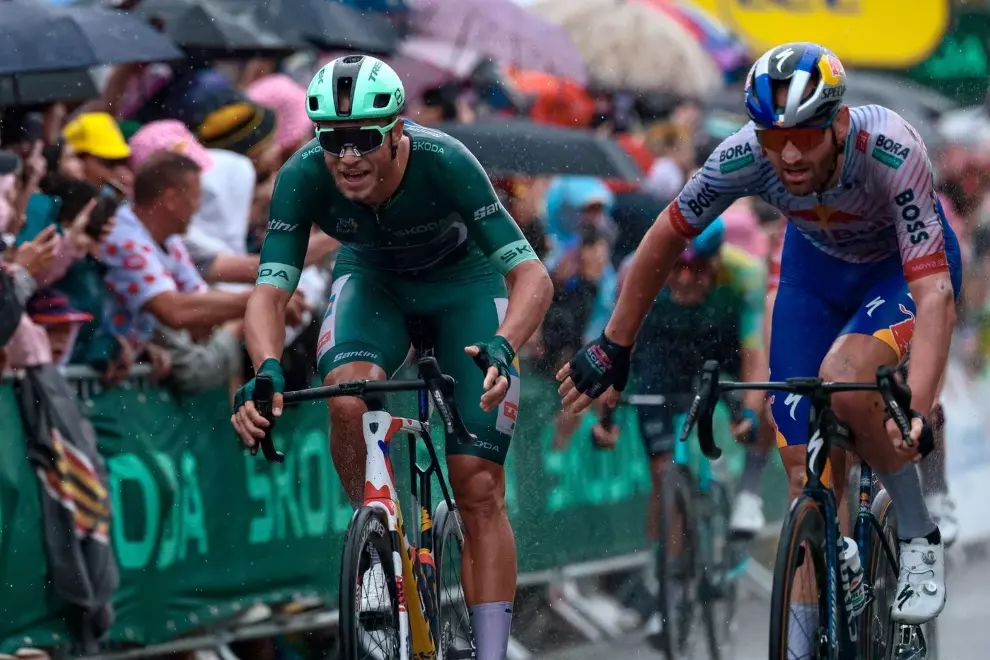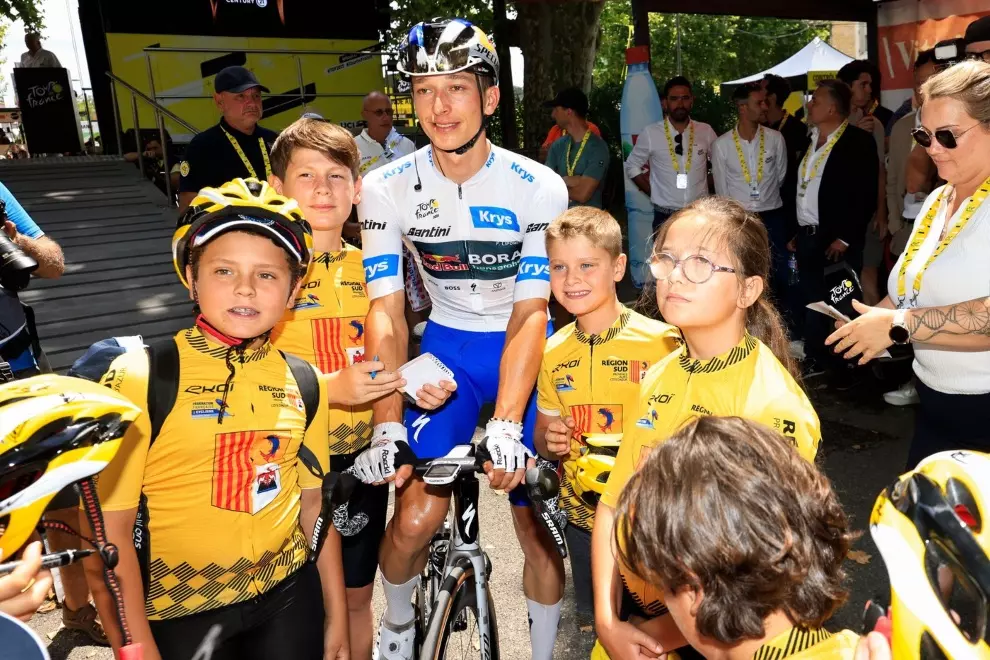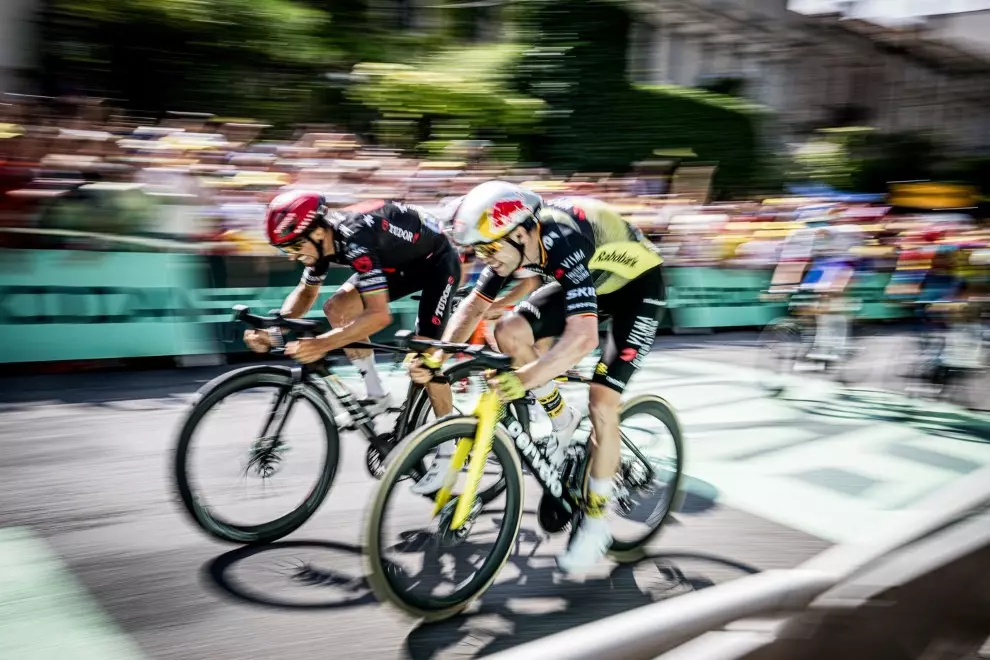So it’s fitting, really, that as the year winds down, one of the sport’s greats, five-time Tour de France winner Eddy Merckx, crashed on a recreational ride near Mechelen, Belgium, and broke his hip. The 79-year-old holder of most road race victory records told HLN that his bike slipped on wet tracks at a railway crossing. “During my bike ride, it suddenly started to drizzle,” he said. “I slid away with my rear wheel. I fell right on my right thigh and knew immediately that it was a fracture.”
He was taken to hospital, underwent an operation and intends to get back on a bike as soon as possible. His accident came less than two weeks after Evenepoel crashed during a training ride, when the driver of a postal van opened the door in front of him, and suffered multiple fractures. He was taken to Erasmus Hospital in Anderlecht where scans revealed “fractures to his rib, right shoulder blade, and his right hand” as well as “contusions on both lungs and a luxation of the clavicle,” his Soudal–Quick Step team said in a statement.
He will not return to training until February and plans to start racing in mid-April, he told Studio Brussel last week. That means he will miss several important one-day Classics, such as Strade Bianche and probably the Tour of Flanders, which is held in the first week of April. This crash was Evenepoel’s second of the year after he came down in the Tour of the Basque Country in the mass crash that seriously injured two-time Tour winner Jonas Vingegaard and several others.
These crashes have become a serious and, as I’ve said, contentious topic of discussion, especially in the wake of the deaths of the popular Swiss rider Gino Mäder on a high-speed descent in the 2023 Tour de Suisse, that of Norwegian pro cyclist André Drege after crashing on a descent at this year’s Tour of Austria, and that of 18-year-old Muriel Furrer who crashed on a wet descent during the Women’s Junior Road Race World Championships on September 26.
Clearly, riders crash for many reasons – a bad or wet road surface, carelessness or over-aggressive riding, high speeds in curves, a van door that opens, a stranger’s car driven carelessly – and often are not at fault. But the constantly increasing speeds in the peloton have taken the brunt of the blame. Perhaps because this is the element that, as the Tour de France director Christian Prudhomme apparently believes, is easiest to fix.
“Beyond the behaviour of the athletes and the work of the organisers, it is absolutely necessary to reduce speed by appropriate measures: the riders are going too fast,” Prudhomme said at the annual general assembly of the Association of Race Organisers (AIOCC). “The faster they go, the greater the risk and the more they endanger themselves and others.”
EF Education–EasyPost General Manager Jonathan Vaughters disagrees and took to social media to express his disagreement. “It is absolutely infuriating to me how these fat cats, who have never raced so much as a child’s tricycle, turning tens of millions in profit off the backs of others, squarely throw the blame of safety issues in cycling on the riders,” he wrote on X, then added: “[Riders] are highly competitive people. They are hard-wired to the bone to take life-threatening risks. Similar to F1 drivers. And like in F1, the answer is to create a safer environment around them. Because they will always push the envelope as far as it goes.”
The truth is that in this year’s biggest crash, at the Tour of the Basque Country, the riders who fell had slowed down for a curve and were undone by a road surface distorted by tree roots under the asphalt. In addition, Vingegaard had flagged that particular spot in the course as unsafe six months before the race, and, apparently, nothing was done.
Regardless, the publication Escape reported in June that, according to “industry sources,” the UCI was looking into three ways to slow down the peloton, “a maximum rim depth, a gearing limit, and updates to handlebar width and lever angle rules.”
Recently, during a press conference at the UAE training camp in Spain, Pogačar also took part in this ongoing discussion, telling Escape, “Everybody wants to go faster all the time. The whole cycling world is developing like any other sport, breaking records every year and going faster and faster. Technology moves ahead, and in one way I totally understand that we cannot be stuck on a steel bike that goes 10 km per hour slower. Marketing doesn’t go so well selling the bikes, the jersey, the helmets.”
He then made the sensible suggestion that course improvements are essential to increasing safety on the road. “Organisers are trying with new barriers on the roads. In some ways, they’re really good,” he said. “Choosing the right roads, for me, is crucial. Not to go over speed bumps when it’s 70 km per hour. Sensible finishes.”
The Slovenian three-time Tour de France winner also pointed to the weather protocol, which can be used to shorten or abandon races when the conditions become hazardous. “It’s getting used more and more, especially when there’s snow or rain, or super cold, they’re starting to apply it sometimes in the bigger races,” he said. “In smaller races, they are still using it too [little]. Thinking of the opposite side, it’s 45 degrees [Celsius] in some races, and people don’t care because the car is air-conditioned. I think it’s super dangerous.”
These are all sensible suggestions but, unfortunately, they appear to be low on the bucket list of race organisers. It takes a great deal of effort and expense to make a course safe. It can involve many kilometres of road resurfacing or placing protective netting on steep descents, as in Alpine skiing, or even rerouting a race or stage because of a broken surface.
Who foots the bill for all that? The race organiser? The community hosting the race or stage? The UCI? Much better, and cheaper, to ask the bike manufacturers to limit the gearing and restyle the handlebars. And, of course, the manufacturers will be just too delighted to put a slower bike on the road when all their technology is geared (no pun intended) towards producing a more aerodynamic and faster product every year.
You can’t ask riders to slow down either. They are racing for money, to support their families, and they know that they won’t make more money by riding slower. There is much more money in the sport now, and speed is one of the reasons for that. It’s no coincidence that cycling’s global popularity has grown as the riders’ speeds – and, let’s face it, their risks – have increased. However, cycling is a dangerous sport, it always has been, but the danger has reached an unprecedented level, as has the sport’s popularity. Again: not a coincidence.
Technology will continue to do what it always does, make bikes even faster, which means that training methods have to improve to make cyclists capable of better handling these speeds. But riders are not created equal, and some will simply not have the reflexes to deal with the high speeds.
Having said that, roads will have to improve to accommodate these speeds, – this is essential. And they must be carefully inspected every year. Safety netting will have to be set up on hazardous curves and potential hazards, such as a surface that is slippery when wet or a particularly technical curve on a descent, are clearly marked in every race or stage.
Still, I can imagine a day in the not-too-distant future when riders will be clad from head to toe in a light, shock-absorbent, super-flexible nanoplastic that will protect them from serious injury without restricting their movements on the bike. And/or their bikes and helmets will be connected to the road on which they are racing via lidar, a sensor system that will enable self-driving cars to communicate with each other and with the road infrastructure.
But I’m fairly certain that whatever the future holds, they won’t be riding slower than they are today.






